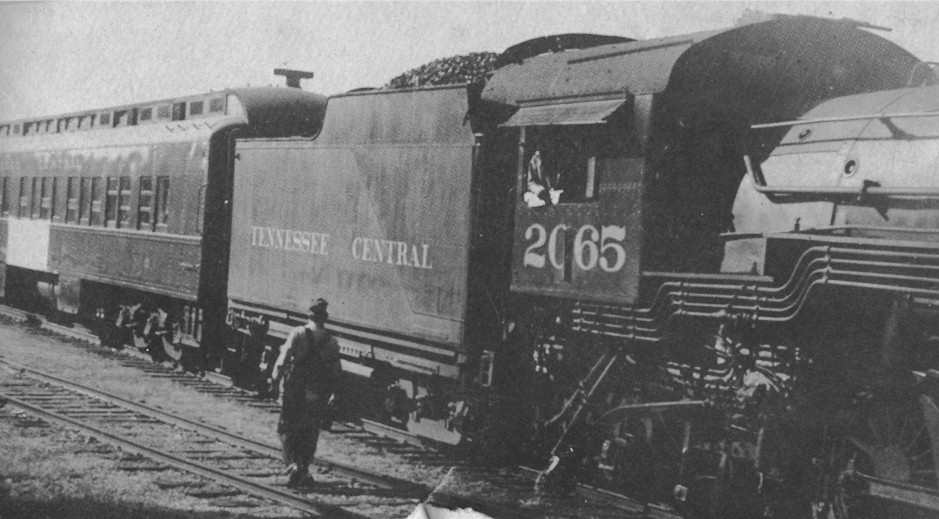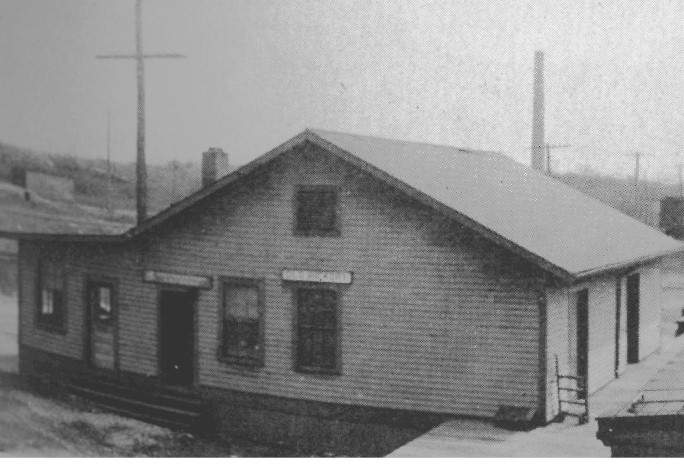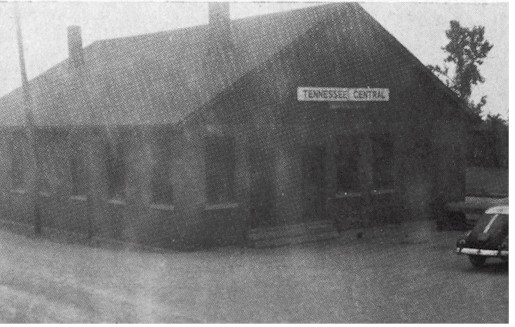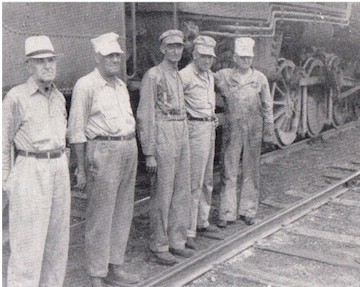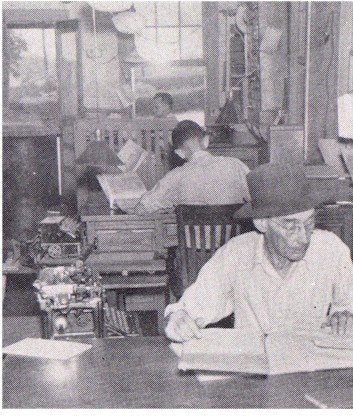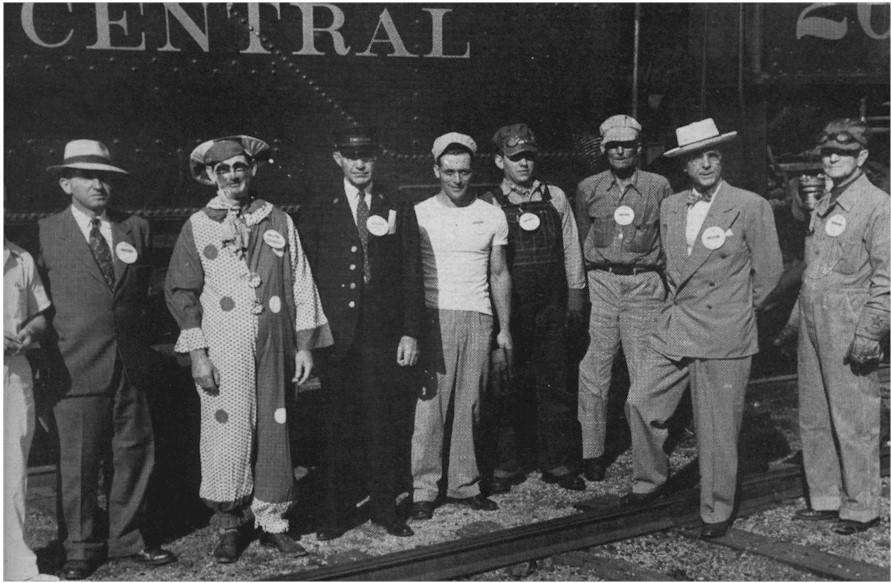|
|||||
| The Building of A Rail System | |||||
|
|
|||||
| Before real progress could be made at the
powder plant site it was necessary to construct a railroad, but before
even that could be done the country roads between the Lebanon turnpike
and the site had to be macadamized in order that heavy trucks could
deliver materials and men. The existing country road from the Lebanon
pike at a point near the Confederate Soldier's Home was widened and
heavily macadamized to the site of the plant, a distance of about five
and one half miles. Over this road by truck, over the Gallatin pike by
way of the ferry and up the river in barges came the first materials
used at Old Hickory. Meanwhile, the construction of a railroad was being
rushed. Knowing that such an emergency would arise, officers of the
Nashville, Chattanooga & St. Louis Railway had caused a survey to be
made for a road connecting with their tracks and with the Tennessee
Central Railroad tracks near Hermitage Station. This provided for a
railroad a little over seven miles long into the plant reservation.
Speed in construction was of paramount importance. Construction was
begun on February 10. Exactly thirty day later trains were running over
the line. the work had involved moving 50,860 cubic yards of earth,
11,560 cubic yards of solid rock and 29,780 cubic yards of earth borrow;
10 acres of the right of way were cleared of trees and stumps, 624
lineal feet of pipe culvert were laid and 315 cubic yards of foundation
excavation were moved. Thus was established a world's speed record in
railroad construction. After the first line of railroad was completed and was carrying hundreds of cars of material and thousands of laborers daily, construction of the second track was begun. Two interchange yards were constructed near the crossing of Stoner Creek, with some 16,000 feet of track. Much other grading and track laying was necessary both inside and outside of the plant area, involving the moving of about 2,500,000 cubic yards of earth. After the first track was laid there was not the same necessity for speed, but the entire work was done in record time. In less than five months there was constructed and ready for operation a double track line of railroad seven and one half miles long, over rough country, crossing one stream with a steel bridge and several trestles.
|
|||||
|
|
|||||
| The Powder Puff Special | |||||
|
"We're in the War, right in
the game,
Old Hickory Tennessee Central Railroad Depot - 1920s
Old Hickory Tennessee Central Railroad Depot - 1940s |
|||||
| At the peak of the powder plant days there were thirty-two
trains daily carrying altogether 17,000 workers and an average of 275
freight cars. One of the most popular passenger trains was the one
exclusively for ladies. It was called the "Powder Puff
Special" and left Union Station in Nashville at 7:00 a.m.
Nearly every Powder Puff passenger carried a knitting bag. The
forty-five minute trip was spent in knitting for soldiers, the Red
Cross, or their families. This train was in use until 1919
and retained its feminine character by transporting teachers and lady
shoppers to Nashville.
Margaret Marie Tootle, A History of Old Hickory Tennessee,. Thesis (M.A.)--George Peabody College for Teachers, 1953 |
|||||
|
|
|||||
| Train Riots | |||||
| On at least two occasions there were riots or near
riots at Old Hickory. Both of the incidents were related to commuter
trains returning workers to Nashville in the evening. Because of
the long work day and the length of time it took to get
back to Nashville, there was always competition to get out of work
rapidly and onto the first train heading for Nashville. In the
summer the trains were very hot and some men began riding on top of
the cars. Du Pont officials decided this was unsafe and ordered
the guards to forbid any train to depart while men were so
riding. One evening approximately a hundred men refused to move
inside the cars. They threw stones at the guards and attempted
to take over the engine and operate the train themselves. The
guards arrested twenty-three men for their participation in the
fracas.
David Brand's Thesis at Vanderbilt University - "Fill the Empty Shell: The Story of the Government Munitions Project at Old Hickory, Tennessee 1918-1919" – May 1971 |
|||||
|
|
|||||
|
|
|||||
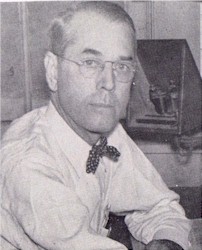 Railroading, somehow gets in your blood and stays
there. For example, the train crew pictured at right can boast
of 177 years railroad service. W.O. Uffleman,
conductor, has followed the iron trails 40 years. A.C. Grimsley,
engineer on 602 Old Hickory each day, 42 years; J.F. Belcher,
brakeman, 45 years; J.W. Myers, fireman, 16 years, and J.S. Krise, 34
years. All members of the crew are residents of Nashville. Mr.
R.R. Rummage (photo left), depot agent, has been with Tennessee Central 36 years
and Old Hickory since 1927. He makes his home in Madison. Railroading, somehow gets in your blood and stays
there. For example, the train crew pictured at right can boast
of 177 years railroad service. W.O. Uffleman,
conductor, has followed the iron trails 40 years. A.C. Grimsley,
engineer on 602 Old Hickory each day, 42 years; J.F. Belcher,
brakeman, 45 years; J.W. Myers, fireman, 16 years, and J.S. Krise, 34
years. All members of the crew are residents of Nashville. Mr.
R.R. Rummage (photo left), depot agent, has been with Tennessee Central 36 years
and Old Hickory since 1927. He makes his home in Madison.
Cellophane Flashes, October-November 1945 |
|||||
|
Depot Office Personnel |
|||||
|
|
|||||
| CRA
(Cellophane Recreation Association) Takes a Train to Cookeville |
|||||
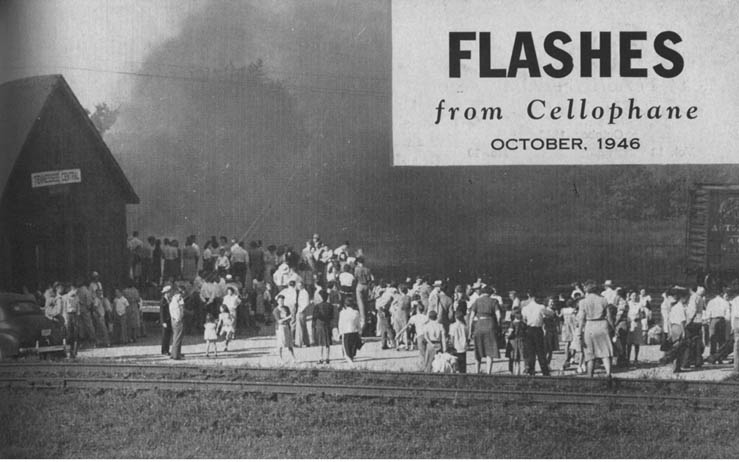
|
|||||
| Cellophane employees gather to board the train for a picnic and games in Cookeville. | |||||
|
|
|||||
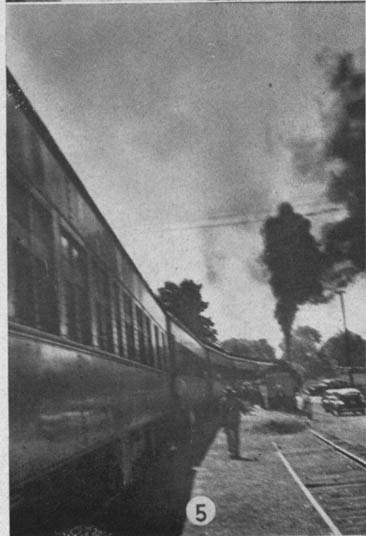 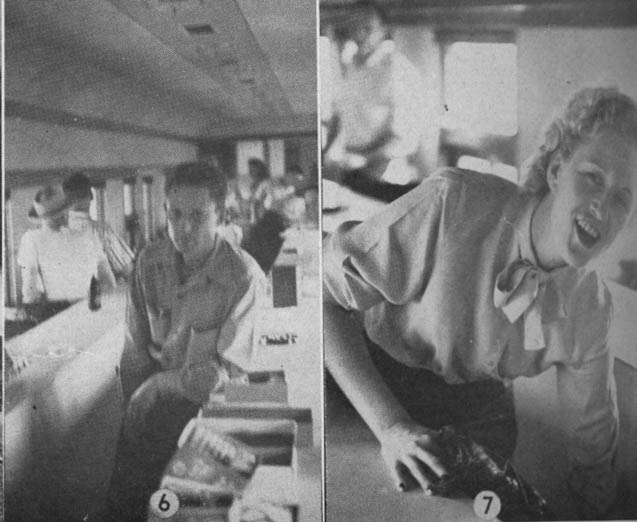
|
|||||
| Left: Train stops in Mt. Juliet. Middle: Harrison waiting for a customer. Right: Audrey keeps the soft drinks moving. | |||||

|
|||||
|
Left: Bill Lewis, Mary Callis, and Imogene Potter. Right: Fred Patton and son. |
|||||
|
The Great Nashville Wreck of 1918" |
|||||
|
"The Great
Nashville Wreck of 1918"
Several passengers aboard this train were employed at the powder plant. I have provided a link at the bottom of the website. This story offers a tremendous lesson in safety. |
|||||


